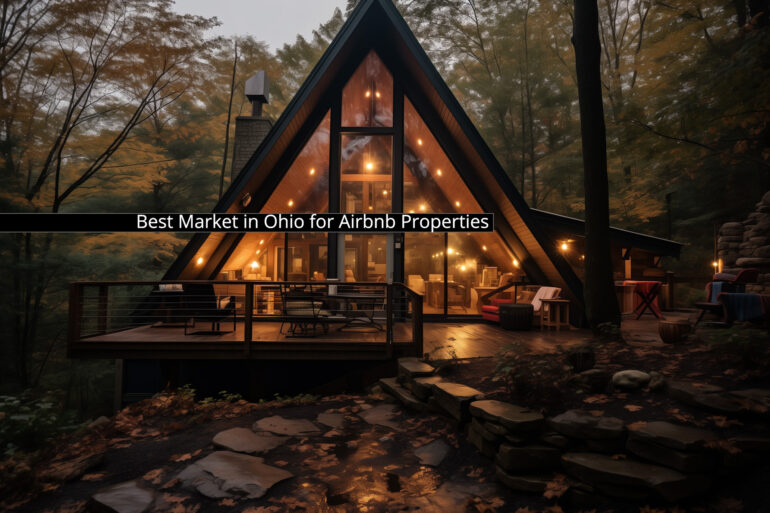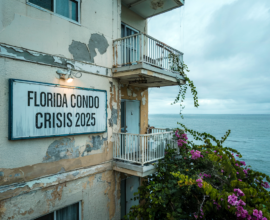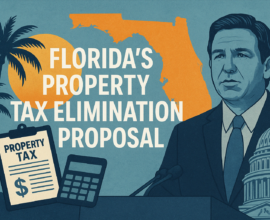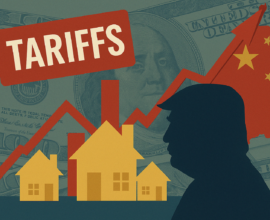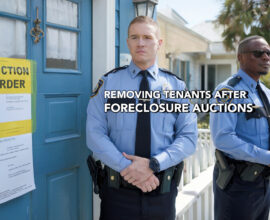This is the Best Market in Ohio for Airbnb Properties!
With annual gross revenues in North America exceeding $20 billion, Airbnb remains strong. Is Airbnb a profitable option for real estate investors in Ohio?
Airbnb functions as a broker that generates commissions using an international online marketplace to primarily facilitate short-term rentals (STRs). Unlike renting unfurnished units with 6 or 12-month lease agreements, this strategy for emerging real estate investors involves purchasing properties that they will furnish and offer as STRs with daily or weekly rates.
Note: For our purposes, we will not analyze the Airbnb model from the standpoint of existing homeowners who rent rooms within properties that they currently occupy.
As with any aspect of real estate investing, assessing the profitability of an opportunity involves making calculations using several critical metrics or key performance indicators. Aside from profitability, investors should also further evaluate how the Airbnb model’s unique set of advantages and disadvantages fits with their goals and circumstances — largely from a day-to-day, operational perspective.
Key Metrics
Several companies have created calculators using short-term rental intelligence models.
Consider the following metrics or indicators to evaluate investment profitability.
Occupancy Rate
Occupancy Rate = Booked Nights / Available Nights
Strive for occupancy rates of greater than 65%.
Annual Rental Income
Rental Income = Booked Nights x Average Nightly Rate
The average nightly rates are largely dictated by the local demand. Recent data from NerdWallet cited the median rate for one-night stays as $314 and the median rate for seven-night stays as $213.
Average Length of Stay
Although the average reported stay varies, the consensus is three to four nights. Many Airbnb hosts impose two (or more) night minimums. Stays of four-plus days are usually considered desirable and may enhance profitability.
Return on Investment (ROI)
While accurately calculating ROI on an existing Airbnb property is possible, based on the number of variables and complexity, accurately forecasting the ROI on an Airbnb short-term rental property is more challenging.
Several companies have created calculators using short-term rental intelligence models. For example, AirDNA has an Airbnb Calculator, which competes with the Rentalizer designed by Airbtics.
Benefits / Advantages
Part of Airbnb’s success is attributed to maintaining a robust marketing platform that gets results.
Higher Gross Rental Revenue
In a good location, a properly furnished Airbnb short-term rental should generate considerably more rental income on a daily or weekly basis compared to a traditional, unfurnished unit with a long-term lease. Rental rates are particularly higher in areas with limited hotel beds or when the nightly rates of the hotels in the region are high.
An Airbnb with attractive amenities will also demand higher rent. For example, units with a jacuzzi, pool, or an outdoor patio area. You might also consider distinguishing your property from the competition by promoting it as being kid-friendly or pet-friendly.
Personal Use of Rental for Getaways
Your rental property might also provide additional value as a place for you to get away — particularly when located in a vacation destination.
Investment Diversity
Many investment experts have long recommended maintaining some diversify within your portfolio. STRs can help diversity your portfolio in addition to real estate investment trusts, commercial properties, and stocks or bonds, etc.
Listing on the Airbnb Platform
Part of Airbnb’s success is attributed to maintaining a robust marketing platform that gets results. The company’s CFO recently explained that the Airbnb platform is increasingly effective at attracting new users and retaining existing users.
Drawbacks / Disadvantages
In Ohio, some agencies and community groups have voiced concerns with STRs.
Higher Likelihood of Having Careless or Indifferent Tenants
Some reports suggest that STRs are more likely to attract rowdy or inconsiderate guests who are disruptive and may create property damage. Airbnb has various countermeasures that protect hosts (and guests). For example, in the U.S., Airbnb performs background checks on guests and hosts. The screening process uses the U.S. Treasury’s Office of Foreign Assets Control lists, sex offender registries, and more.
Airbnb includes free AirCover for every host and guest. Some of the benefits included in AirCover are government ID verification, $3 million in damage protection, $1 million in liability insurance, and more.
Potentially Less Appealing to Passive Investors
Another commonly cited drawback of investing in short-term rentals is that hosts are continually burdened with property-related activities. However, many STR owners use property managers to lessen their involvement, yet this comes at a cost that might hinder profitability.
Government Regulation and Community Opposition to Short-Term Rentals in Ohio
In Ohio, some agencies and community groups have voiced concerns with STRs. For example, the Neighbors for More Neighbors in Columbus group believes that the potential profits from STRs in the region are inflating the housing prices, making home ownership less feasible for many residents.
Although many Ohio counties and cities have implemented licensing and tax requirements, STRs are not heavily restricted from operating in places such as San Francisco, New York City, or Santa Monica.
Some recent regulations related to STRs in Ohio include:
- In Akron, STR operators must obtain and renew annual certificates with a $250 fee and pay excise or “bed” taxes of 5.5% as hotels do.
- The City of Beavercreek, located east of Dayton, requires STRs to “visibly” display their license and pay the existing 3% hotel and motel tax
- Short-term rentals in Columbus are subject to the 3% excise tax that applies to hotels, which must be filed with the auditor each month.
- Cuyahoga County (Cleveland) requires a 6.5% county bed tax.
- Cincinnati now requires the payment of a 7% Short Term Rental Excise Tax.
Most Profitable Local STR Markets in Ohio
Based on a variety of assessments of the short-term rental market in Ohio, it appears that investors have good opportunities using Airbnb in the Hocking Hills region and a host of locations along the coast of Lake Erie.
The following table shows the best Airbnb markets in Ohio based on return on investment (ROI) calculations. Note: Only “medium” or “large” markets are included for these purposes.
| Ohio Market | Market Size | ROI |
| Logan | Large | 14% |
| Geneva | Medium | 14% |
| Huron | Medium | 13% |
| Port Clinton | Medium | 11% |
| Toledo | Medium | 9% |
| Akron | Medium | 8% |
| Oxford | Medium | 8% |
In looking at the top-ranked markets, we notice that the Hocking Hills State Park and Hocking State Forest areas and several locations along Ohio’s northern Lake Erie coast are clearly great locations for STRs. One commonality is that both of these settings offer access to nature.
The Hocking Hills Region
The Hocking Hills State Park and Hocking State Forest area offer access to nature. There are trails throughout the area for hiking with caves and rock formations to explore. There are waterfalls and lakes for fishing, canoeing, and kayaking. Some of the locations in this region to consider include:
- Laurelville
- Logan
- Nelsonville
- Rockbridge
- South Bloomingville
Another advantage to the Hocking Hills region is that it is only about a one-hour drive to Columbus, a thriving urban setting in Ohio.
Areas Along Lake Erie
As one of the five Great Lakes, Lake Erie is another natural attraction in Ohio. Investors should consider STRs in some of these locations:
- Geneva
- Huron
- Port Clinton
- Sandusky
Huron, Port Clinton, and Sandusky are all close to the Cedar Point amusement park, which consistently remains among the top three best-rated parks in the U.S.
Assessing the Profitability of a Possible Airbnb STR
Based on a variety of assessments of the short-term rental market in Ohio, it appears that investors have good opportunities using Airbnb in the Hocking Hills region and a host of locations along the coast of Lake Erie.
Signs indicate that the statewide real estate market in Ohio is healthy. A recent Ohio REALTORS report showed increases in sales prices in 12 of the state’s 13 markets. These increases occurred despite the current sky-high interest rates.
Regardless of the state, those seeking to purchase a property for STR purposes should closely assess the specific property, local area, and key metrics. Other best practices include choosing properties in attractive locations, adding amenities, implementing creative design ideas, and having high-quality photos and videos for marketing the unit.
